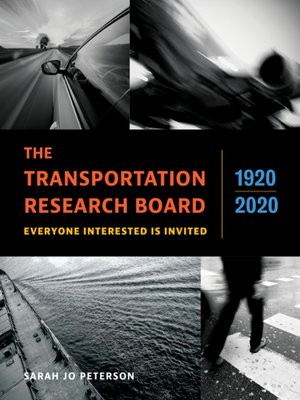The Transportation Research Board, 1920-2020
ebook ∣ Everyone Interested Is Invited
By Sarah Jo Peterson

Sign up to save your library
With an OverDrive account, you can save your favorite libraries for at-a-glance information about availability. Find out more about OverDrive accounts.
Find this title in Libby, the library reading app by OverDrive.



Search for a digital library with this title
Title found at these libraries:
| Library Name | Distance |
|---|---|
| Loading... |
In 1920, state highway engineers, federal officials, and experts from academia were among a small group convened by the National Academy of Sciences to confront the problems of the highway. The public was entrusting them with billions of dollars for good roads, and World War I had proved the feasibility of moving freight long distances by truck. But even new highways were crumbling. They turned to research for solutions.
The founders of the Transportation Research Board (TRB) and the generations that followed took on problems such as safety, social equity, and environmental issues. They embraced "total transportation," adapting their highway research model to urban transportation and then applying it to rail, marine, and aviation modes. Today TRB convenes thousands of researchers, practitioners, and administrators every year to advise the government, solve practical problems, foster innovation, and stimulate new research.
In The Transportation Research Board, 1920–2020: Everyone Interested Is Invited, Sarah Jo Peterson tells the story of how people and institutions created and have continued to shape TRB. In a compelling narrative accompanied by more than 150 images exploring the history of transportation and research, she argues that TRB can be best understood as an infrastructure—one that people purposely designed and devotedly maintained.
Despite TRB's institutional complexity, its unique mission, the vast collection of acronyms in its orbit, and the significant changes to the organization in its first 100 years, Dr. Peterson provides a view from 30,000 feet, deftly describing the social, political, and economic context in which transportation (and TRB) functioned. At the same time, she attends to details of the key events, individuals, and human motivations that shaped TRB's evolution.
The author's skills as a historian, her experience in the transportation field, and her manifest ability to tell a good story have produced a book that transportation professionals of all stripes—and, for that matter, anyone interested in the history of transportation in the United States—should find both engaging and informative and an essential addition to their library.







